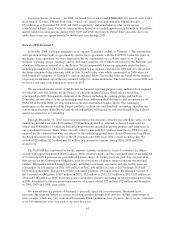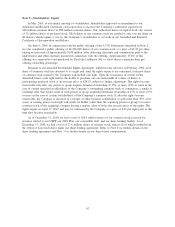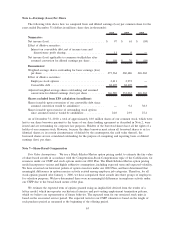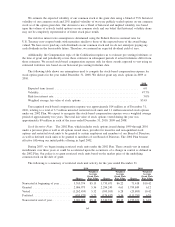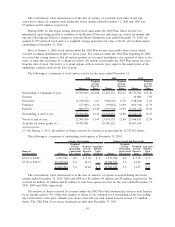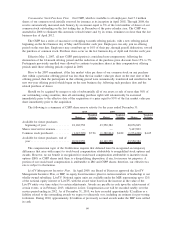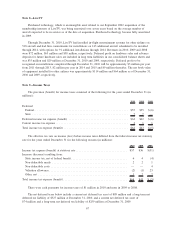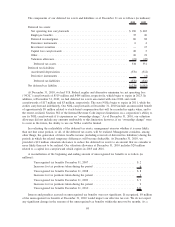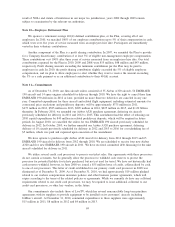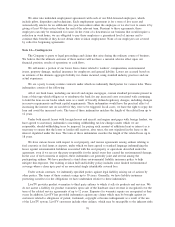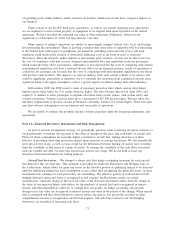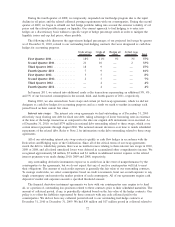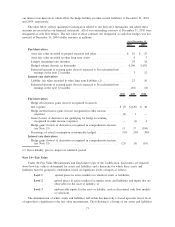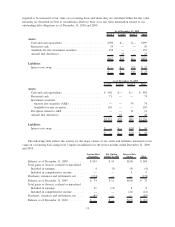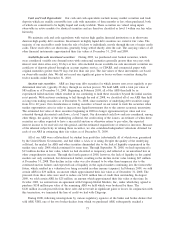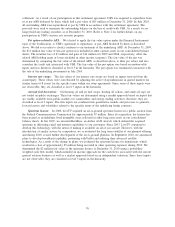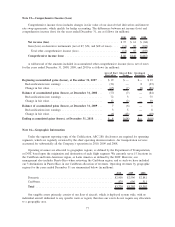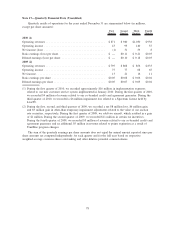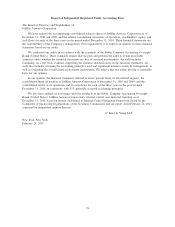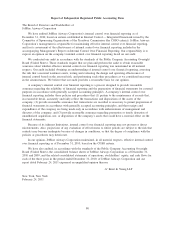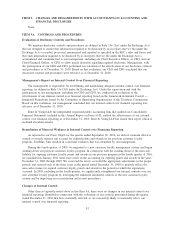JetBlue Airlines 2010 Annual Report Download - page 80
Download and view the complete annual report
Please find page 80 of the 2010 JetBlue Airlines annual report below. You can navigate through the pages in the report by either clicking on the pages listed below, or by using the keyword search tool below to find specific information within the annual report.of operating in the airline industry and/or economic downturns, which may in turn have a negative impact on
our business.
Under certain of our LiveTV third party agreements, as well as our aircraft operating lease agreements,
we are required to restore certain property or equipment to its original form upon expiration of the related
agreement. We have recorded the estimated fair value of these retirement obligations, which was not
significant as of December 31, 2010, but may increase over time.
Many aspects of airlines’ operations are subject to increasingly stringent federal, state, local, and foreign
laws protecting the environment. There is growing consensus that some form of regulation will be forthcoming
at the federal level with respect to greenhouse gas emissions (including carbon dioxide (CO
2
)) and such
regulation could result in the creation of substantial additional costs in the form of taxes or emission
allowances. Since the domestic airline industry is increasingly price sensitive, we may not be able to recover
the cost of compliance with new or more stringent environmental laws and regulations from our passengers,
which could adversely affect our business. Although it is not expected that the costs of complying with current
environmental regulations will have a material adverse effect on our financial position, results of operations or
cash flows, no assurance can be made that the costs of complying with environmental regulations in the future
will not have such an effect. The impact to us and our industry from such actions is likely to be adverse and
could be significant, particularly if regulators were to conclude that emissions from commercial aircraft cause
significant harm to the upper atmosphere or have a greater impact on climate change than other industries.
In December 2009, the DOT issued a series of passenger protection rules which, among other things,
impose tarmac delay limits for U.S. airline domestic flights. The rules became effective in April 2010, and
require U.S. airlines to allow passengers to deplane after three hours on the tarmac, with certain safety and
security exceptions. Violators can face fines up to a maximum of $27,500 per passenger. The new rules also
introduce requirements to disclose on-time performance and delay statistics for certain flights. These new rules
may have adverse consequences on our business and our results of operations.
We are unable to estimate the potential amount of future payments under the foregoing indemnities and
agreements.
Note 13—Financial Derivative Instruments and Risk Management
As part of our risk management strategy, we periodically purchase crude or heating oil option contracts or
swap agreements to manage our exposure to the effect of changes in the price and availability of aircraft fuel.
Prices for these commodities are normally highly correlated to aircraft fuel, making derivatives of them
effective at providing short-term protection against sharp increases in average fuel prices. We also periodically
enter into jet fuel swaps, as well as basis swaps for the differential between heating oil and jet fuel, to further
limit the variability in fuel prices at various locations. To manage the variability of the cash flows associated
with our variable rate debt, we have also entered into interest rate swaps. We do not hold or issue any
derivative financial instruments for trading purposes.
Aircraft fuel derivatives: We attempt to obtain cash flow hedge accounting treatment for each aircraft
fuel derivative that we enter into. This treatment is provided for under the Derivatives and Hedging topic of
the Codification, which allows for gains and losses on the effective portion of qualifying hedges to be deferred
until the underlying planned jet fuel consumption occurs, rather than recognizing the gains and losses on these
instruments into earnings for each period they are outstanding. The effective portion of realized aircraft fuel
hedging derivative gains and losses is recognized in fuel expense. Ineffectiveness results, in certain
circumstances, when the change in the total fair value of the derivative instrument differs from the change in
the value of our expected future cash outlays for the purchase of aircraft fuel and is recognized in interest
income and other immediately. Likewise, if a hedge does not qualify for hedge accounting, the periodic
changes in its fair value are recognized in interest income and other in the period of the change. When aircraft
fuel is consumed and the related derivative contract settles, any gain or loss previously recorded in other
comprehensive income is recognized in aircraft fuel expense. All cash flows related to our fuel hedging
derivatives are classified as operating cash flows.
71


